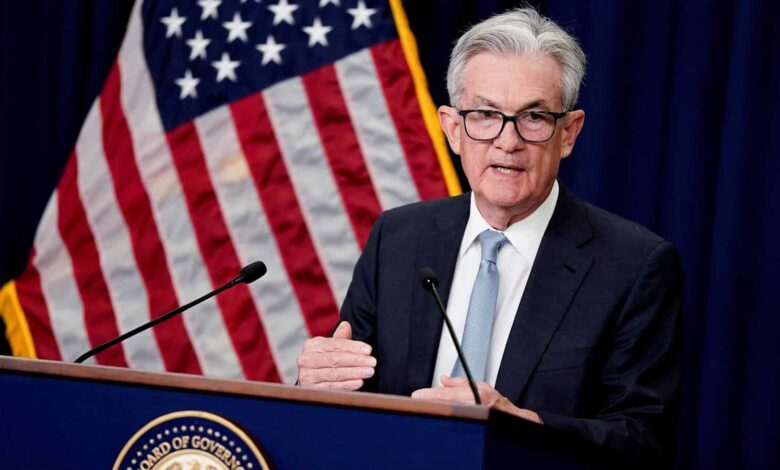The Federal anticipates further rises as it contines it fight against inflation.

The Federal Reserve increased its standard interest rate by a significant three-quarters of a point for the third time in a row on Wednesday to combat inordinate affectation. This aggressive pace will increase the liability of an eventual recession. The Fed’s action increased the standard short-term rate, which has an impact on numerous consumer and marketable loans, to the loftiest position since early 2008, in the 3 to 3.25 range.
The authorities also predicted that their standard rate would rise to around 4.4 by the end of the year, which is a full percentage point higher than what they predicted in June. And they anticipate raising the rate even more in the ensuing time, to roughly 4.6. The position would be the topmost since 2007. Because the Fed anticipates dizzying rate increases in the future, stock prices on Wall Street dropped, and bond rates increased.

Action by the central bank The move The move on Wednesday came after a government report last week that showed high prices spreading more extensively throughout the country, with rent price harpoons and other service price harpoons getting advanced despite some previous motorists’ affectations, like petrol prices, having dropped.
The Fed increases adoption costs, making it more expensive to get a mortgage, a vehicle loan, or a business loan. After that, people and companies will likely adopt and spend lower prices, which will limit affectation and increase frugality.
Fed officers have stated that they’re aiming for a “soft wharf,” whereby they can manage to limit GDP just enough to control affectation but not enough to start a recession. Still, more and more judges believe that the Fed’s sharp rate increases will ultimately result in job losses, growing severance, and a full-blown recession late this year or beforehand.
The Fed’s officers prognosticate that profitable growth will be lackluster for the foreseeable future and that severance will increase. By the end of 2023, it projects that the severance rate will have increased from its present 3.7 to 4.4.
According to experts, historically, a recession has generally come after an increase in the severance rate of half a point over several months. In contrast to its earlier forecast of 1.7 growth, Fed officials now expect frugality to grow by only 0.2 this time. And from 2023 to 2025, it anticipates slow growth of no more than 2.
Similarly, despite the sharp rate increases it anticipates, the Fed still expects core inflation, which includes volatile food and gas orders, to be 3.1 at the end of the year, well above its 2 target. In a speech last month, Chair Jerome Powell admitted that the Fed’s conduct may “bring some pain” to consumers and companies. The resoluteness of the central bank to reduce affectation back down to its ideal, he continued, was “unconditional.”

The caption affectation rate, which was a still-painful8.3 in August compared to a time before, has been modestly reduced by falling gas prices. President Joe Biden’s recent increase in support from the general public, which Egalitarians hope will ameliorate their chances in the November quiz choices, may have been caused by falling gas prices.
By dramatically adding the cost of mortgages, bus loans, and business loans, short-term rates at the position the Fed is now awaiting would increase the liability of a recession imminent. Rates this high for frugality have not been seen since before the 2008 fiscal extremity. The average fixed mortgage rate reached 6 last week, reaching its loftiest position in 14 months. The cost of credit card borrowing has risen to its loftiest position since 1996.
Affectation moments appear to be driven less by force constraints that agonized frugality during the epidemic recession and more by better inflows and consumers’ harmonious amenability to spend. Nonetheless, on CBS’ “60 Twinkles” on Sunday, Biden stated that there was still a chance for a profitable soft wharf and that his administration’s new energy and healthcare policies would result in lower costs for traditional medicine and medical treatment.
Some judges are starting to worry that the Fed’s nippy rate increases, which are the quickest since the early 1980s, could harm frugality further than is needed to control affectation. An economist at the Roosevelt Institute named Mike Konczal stressed that frugality is formerly decelerating and that pay envelope growth, a major factor in affectation, is leveling off and, in some cases, indeed dwindling.

Also, checks reveal that Americans anticipate a large decline in affectation over the next five months. This is a significant trend because people’s prospects of affectation may be fulfilled themselves. However, some will feel less tempted to make further purchases if they anticipate lower affectation. Thus, spending less would help to restrain price rises.
According to Konczal, there is a case to be made for the Fed to gauge its rate of increase over the next two sessions. Enterprises’ concerns about an implicit global recession have increased as a result of the Fed’s nippy rate increases, which are harmonious with the conduct of other significant central banks. Last week, the European Central Bank increased its standard interest rate by 0.75. Recent weeks have seen significant rate hikes from the Bank of England, Reserve Bank of Australia, and Bank of Canada.
And the intermittent COVID lockdowns by the government are harming GDP in China, the alternate-largest frugality in the world. US frugality might be thrown off course if a recession grips most major industries. Some economists, as well as some Fed officers, contend that despite the Fed’s faster rate increases, rates haven’t yet been raised to the point where they would truly limit borrowing and spending and hinder growth.
Numerous economists appear to think that massive layoffs will be needed to stop price increases. According to studies conducted by the Brookings Institution and released earlier this month, severance may need to reach 7.5 to bring affectation back to the Fed’s ideal of 2.

The study was conducted by economist Laurence Ball of Johns Hopkins University and two economists from the International Monetary Fund. They assumed that only a depression this severe would decelerate pay envelope growth and consumer spending sufficiently to control affectation.
Edited by Prakriti Arora




